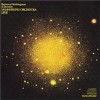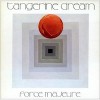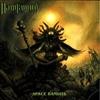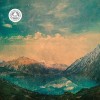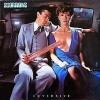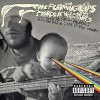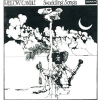Loading cart

Bundles (2CD)

Loooong out of print and now available again in an expanded/remastered edition with a new booklet and interview with John Marshall. Bundles (AKA "the one with Holdsworth") was a marked difference in Soft Machine's history. The most obvious was the return of guitar...and what a guitar! The addition of Mr. Holdsworth took an already amazing band and launched them into the stratosphere. Simply one of the essential gold standard progressive rock/fusion albums of all time. One listen to Hazard Profile and you will know why. BUY OR DIE!
"A remastered 2CD edition of the 1975 album ‘Bundles’ by the celebrated Jazz/Progressive group Soft Machine. The album was the band’s first for EMI’s Harvest and featured a line-up of Mike Ratledge (keyboards), Karl Jenkins (oboe, piano, soprano sax), John Marshall (drums), Roy Babbington (bass) and Allan Holdsworth (guitar).
An accessible collection, ‘Bundles’ showcased Holdsworth’s considerable guitar playing talents and opened a new chapter for the band. The album attracted much praise, especially the stunning five-part piece ‘Hazard Profile’.
Following the release of ‘Bundles’ in March 1975 the band embarked on a busy touring schedule, but they soon faced the blow of Allan Holdsworth departing suddenly to join The New Tony Williams’ Lifetime.
Holdsworth was replaced by John Etheridge, and Soft Machine toured extensively for the remainder of 1975. A fabulous concert at Nottingham University on 11th October 1975 and featured much of the material featured on the album, along with early renditions of some pieces which would be recorded for the band’s 1976 album ‘Softs’."
Track Listing:
DISC ONE – BUNDLES – REMASTERED
1 Hazard Profile Part One
2 Hazard Profile Part Two (Toccatina)
3 Hazard Profile Part
4 Three
5 Hazard Profile Part Four
6 Hazard Profile Part Five
7 Gone Sailing
8 Bundles
9 Land of the Bag Snake
10 The Man Who Waved at Trains
11 Peff
12 Four Gongs Two Drums
13 The Floating World
DISC TWO – LIVE AT NOTTINGHAM UNIVERSITY 11TH OCTOBER 1975
1 Bundles
2 Land of the Bag Snake
3 Out of Season
4 The Man Who Waved at Trains
5 JVH
6 The Floating World
7 Ban-Ban Caliban
8 Side Burn
9 Hazard Profile Part One
10 Hazard Profile Part Two (Toccatina)
11 Hazard Profile Part Three
12 Hazard Profile Part Four
13 Hazard Profile Part Five
14 Song of Aeolus
15 Sign of Five

